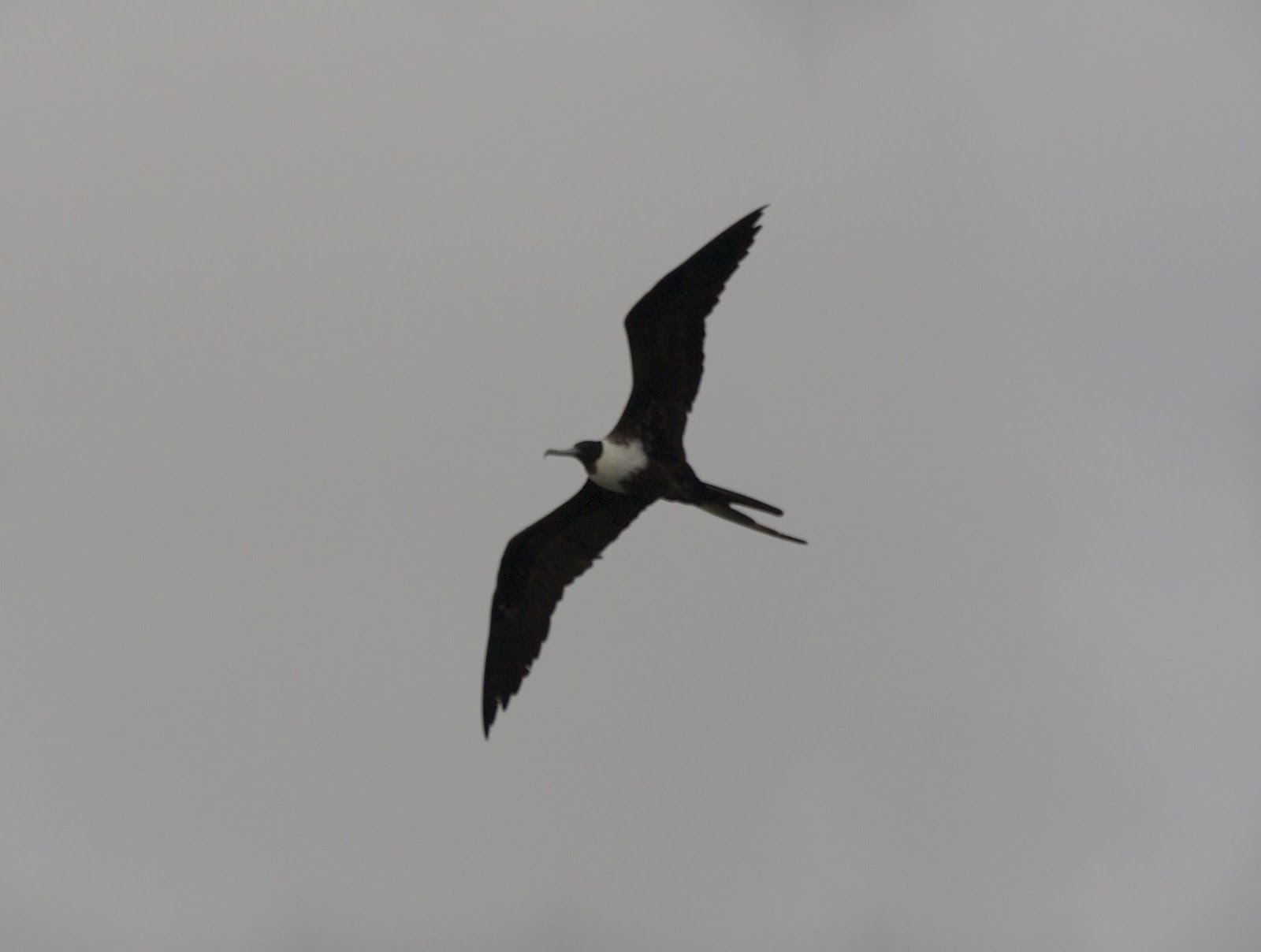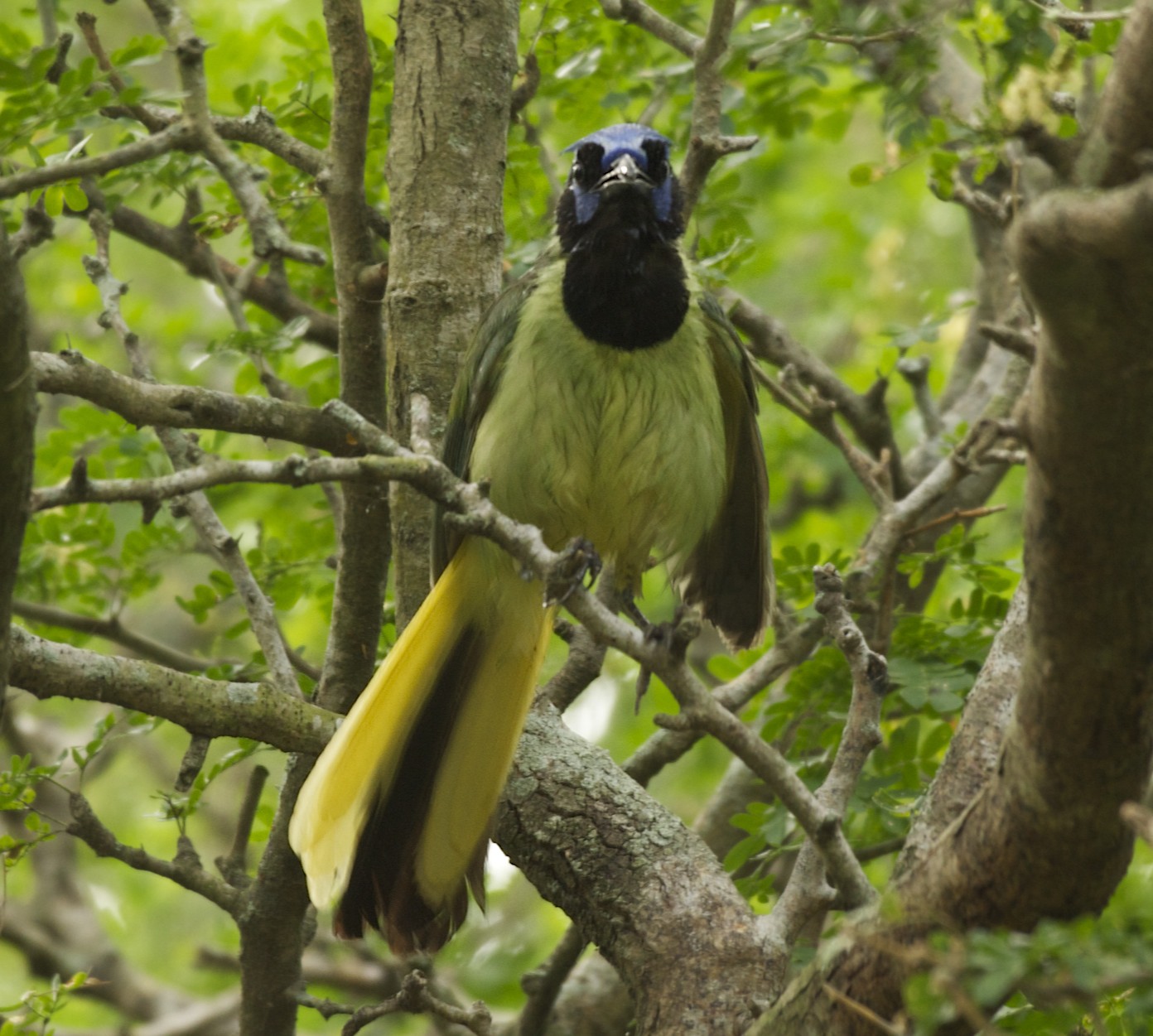The Chiricahua Mountains, famous throughout North America for their unique rock formations as well as their excellent birding and excellent herping, are nonetheless one of the less visited and studied ecosystems (as well as mountain ranges) in Arizona. Despite the ever-present possibility of fabulous Mexican vagrants (talking about birds here) and highly endangered rattlesnakes, the remoteness of these mountains, a good four and a half hours from Phoenix often relegates them to mere talking points in discussions about AZ birding destinations. The closer, better-covered Santa Rita, Catalina, or Huachuca Mountains are now preferred. But even with Short-tailed Hawks seen on Mt. Lemmon this year, there is still one bird the Chiris hold that the rest of AZ's many mountains cannot claim. It was for this bird that I decided to use up the last of my summer vacation, for this bird that I passed up better birding opportunities in the White Mountains with some of AZ's finest. The Mexican Chickadees loomed, and finding this species would finally close the Chiricahua chapter of my AZ birding. So many birders before have been forced to come and pay homage to the lithified temples here, the steep canyon walls and ascending pine forests. I wanted to pay my dues and have this corner of the state map no longer taunting me with its incompleteness.
What follows is a tail of considerable woe and verbose redundancies. It may be harsh; it may be negative; it will have good birds; it will certainly be iconoclastic. It will be about birding in the Chiricahua Mountains, one of the cradles of the big North American birding movement in the 1960s and 1970s, now the grumpy older relative we all must visit at least once, or forfeit an inheritance.
The Chiricahua Mountain range has extensive trails running throughout its expanse, moving between 5,000 and 8,000 feet elevation and exposing one to a variety of habitats. The well known Cave Creek and South Fork birding trails host many of the southeastern Arizona birds, such as Trogons, Sulphur-bellied and Buff-breasted Flycatchers, and myriad Hummingbirds, and also pull vagrants such as Slate-throated Redstart. And of course, there are the Chickadees. The Southwestern Research Station, located on Cave Creek, has multiple on-going field studies, many concerning herpetology in the area (which, even to my uninformed eye, was overwhelmingly excellent) and offers some nice birding on its grounds, where it also accommodates guests as well as researchers.
I was joined by a good friend for two days of camping, two days to find the Chickadee and enjoy the unique volcanic Chiricahuan formations. The camping started out well, with a spot on the John Hands campground next to a waterfall, which proved to be a saving grace after several long and sweaty hikes. Our first morning started on South Fork, where FOY Sulphur-bellied Flycatchers and other lovers of the sycamores made for a busy morning. As we gained some miles and some altitude though, the birding died down, the temperatures grew higher, and the ol' post-op knee, not much the fan of hiking any more, started to ache and swell considerably. We covered about three miles, and knowing each step we took farther up trail would also a be step we'd have to trek back down, I chickened out. No amount of boiled eggs and Nature Valley bars could argue for further progress. We did not gain enough elevation for the Chickadees, but did have some lovely birds along the way, including a Western Tanager that allowed me finally, justly, to document the species.
Truth be told though South Fork disappointed, not because the birding was bad itself, but because the place has such a strong, international reputation relative to how mediocre the birding was by general SE AZ standards.
All in all the incidental reptiles we encountered were of more surprise and intrigue. There was a herpetology class/field day of some sort going on, and after encountering one Rock Rattlesnake on the trail we were able to help some of the herpetologists onto a a very young one. We then found another second year snake farther down the trail, totaling three different rattlesnakes in an hour, and I would also be remiss not to mention that seeing so many snakes right next to the trail, obscured in tall grass, was a bit unnerving.
Various Collared Lizards, Spiny Lizards (mostly Yarrow's), Whip-tails, and Alligator Lizards also made for a cooly cold-blooded hike, and did well to compensate for, if not replace, the overall lack of birds. By time we were back to the car we had maybe two dozen bird species.

So aspects of the first major hike, which consumed the majority of the day, were disappointing, but it was not all a bust. Any place where Blue-throated hummingbirds are one of the more numerous and dominant species cannot be decried too much, even if their shade-perching preferences render one unready to photograph them when they finally come out into the light.
The Blue-throats could be very accommodating, though they don't have quite the flair and sparkle of a Magnificent or Broad-billed Hummingbird.
After falling short on South Fork, we decided to get efficient and drive up to the Chickadee-preferred mixed conifers, typically occurring above 6,500 feet in the area. Rustler and Barfoot Park, though damaged by recent fires, fit the bill, and have the most numerous Chickadee reports in the last few years. Unfortunately, they're a 10-11 mile drive up a steep and poorly graded dirt road, and our vehicle wasn't exactly off-road ready. It was slow and painful getting up, but the Chickadees would be worth it! Except that...scour as we might, we could not find the birds. In fact, somewhat understandably at 3:30 pm, the whole area was pretty dead. Dark-eyed and Yellow-eyed Juncos, as well as Stellar's Jays, were our main company.

An FOY Band-tailed Pigeon helped validate the excursion, but by time we were back to camp I was feeling a bit hard-done. Going back to the Research Station, I was further bothered to check eBird and see that some people had recently reported 6+ MECHs at the station (not nearly high enough, no suitable habitat), which I'm going to have to go ahead and call bullshit on right now.
Admittedly, this was much more peeving than it would have been had I not fruitlessly spent the day chasing these little buggars with a bum knee, but really, 8 Chickadee at the station is pretty lazy and/or misplaced, all the worse when I was trying to find the best realistic spot for them, so, grumble grumble grumble!
We did not want to try the Rustler Park drive again the next day, nor even the comparatively lighter 7 miles (one way) drive to Turkey Creek, where the birds also dwell, given how rough it had been on the car. With our last day we had one risky option: hiking the 4.6 mile Silver Peak trail on the farther east side of the Chiris. If we followed the trail to its end, we'd be high enough (from 4,945 feet to 8,008), and presumably encounter the right habitat, for the birds, but there were no eBird reports nor hearsay from the Research Station to back this up. In fact, there are no eBird reports for this trail at all. Nevertheless, we set out early morning for the 9+ mile hike. It started in this kinda stuff:

Hedging our bets on finding the Chickadees on this lengthy trek was a calculated risk, considering we didn't have a lot of options. But my failing to accurately surmise that the first 3 miles of the hike would be in steep desert canyons, in full sun, and bringing only two water bottles, was an outright mistake. The surrounding scenery was pleasant but the hike was brutal.

After going for a couple of hours and having little idea of our progress, we forlornly scanned the pine-strewn valleys far away, thinking that they, surely, could hold some of our target birds, but seeing no way in which our trail would take us that far. So, to reiterate, I went into this hike with insufficient information and preparation. And, very unpoetically, we persevered from a combination of ignorance and stubbornness!
The Silver Peak trail map only showed one set of switch backs, near the end of the trail, so every time we encountered one of the 5 preceding groups, we assumed we were nearing the summit, and decided to proceed. We weren't expecting to get the birds here but wanted at least to accomplish something, and thus by continually underestimating how far we'd actually gone and by continually assuming the peak was closer than it really was, we blundered on until the pines started getting closer and closer...
..and closer and closer, until finally the trails crossed through some of the comparatively verdant valleys. We crossed through 3 such pine valleys, for lack of a better/proper term, and though they were not exceptionally birdy we regained some hope. The rocky hillsides provided a couple of Montezuma Quail, and a Short-tailed Hawk even called and then flushed up the mountain, pursued by some angry Jays (and this was, in a sense, a rarer sighting than the Chickadees).
And all shall be well, and all shall be well, and all manner of things shall be well.
Now here I will publicize an opinion that is sure to fly worse than a led balloon, or even a soggy Coot. One of the biggest senses of relief and satisfaction I got from the MECHs was not studying this cute little bird in itself, but in knowing I'd likely never have to go back to the Chiris again. I know, that's a pessimistic angle to take after a successful trip.
The mountain range is pretty, there is tremendous ecological value there, but good grief...we put in a lot, A LOT, of work for considerably little pay out. This is not meant as an invective against the Chiricahuas or the people that choose to bird there, but more so a comparative thanksgiving to have mountain ranges that offer almost the same birds (in fact, more of them), much closer and more accessibly. That being said, I'm still looking forward to doing this sort of thing all over again for Colima Warbler in west Texas. Birders can be gluttons for punishment just as well as for plumage.
































































